“During the ongoing COVID-19 pandemic, there was complete uncertainty about colleges reopening and the kind of future I would have,” recalls Dhanashree Madigalekar, a Grade 12 student. “With a lot of support from the community-based learning centre run here in Yerwada, I was able to get into a good college.”
Madigalekar is from the Waghri community, which is officially listed as a denotified tribe. She is referring to a community-based learning centre (CBL) run by the Pune-based NGO Ashraya Initiative for Children (AIC).
Two organizations–Pune’s Ashraya and Mumbai’s Sparsha Charitable Trust (SCB)–are one among many that have been working with communities for over 15 years to develop CBL. In the process, they have established a strong system for community-based learners, health experts, and community volunteers that caters to the holistic development of the community.
The communities they work with include denotified tribes, orphan children, migrant workers, and families from below the poverty line, many of whose children are forced into a trade-off between supporting the family income or staying enrolled in government schools.
A partial solution to these issues, CBL models offer flexibility and an enabling environment for a child. By affiliating with open schooling boards, offering health and nutrition support, and actively supporting parents, they provide a well-rounded ecosystem for a child to truly learn from and gain from.
Such models gain special salience during the COVID-19 pandemic, where strained parents are often left in charge of their child’s at-home learning. With it difficult for a child with more than one sibling to use a smartphone to study, learning losses as a result of online schooling are at an all-time high. And so, during the pandemic, various schools and communities adopted a community-based learning model to supplement students.
“Many children who didn’t choose the CBL model before the pandemic wanted to shift to this model once online school started,” says Sarika, the CEO of Sparsha Charitable Trust. “The model didn’t hamper their learning in schools; rather it gave them the additional opportunity to learn offline.” SCT largely works with Mumbaikars from Scheduled Castes and Tribes, and from religious minorities.
During the pandemic, the community centres at AIC registered 75% attendance, while SCT’s saw 100%. As per a recent SCHOOL Study in the same geographies, NGOs working via a school-based-education model showed attendance rates typically in the 20-30% range. Both the organizations made sure COVID-19 protocols were followed while the centres were open, and no teacher or student dropouts were recorded.
So, why does community-based learning work for students? How can a successful CBL model be set up? Insights from both AIC’s and SCT’s journey may offer some insights.
But First, What Exactly Is Community-Based Learning?
The praxis of CBL is all in the name: it is a teaching methodology that integrates community engagement with classroom pedagogical practices. Students also learn contextual skills that can help them uplift their community. The model is based on the premise that engaged youth can facilitate the upliftment of the communities they come from. The core difference between a school-based education model and a community-based education model is the freedom of choice that each stakeholder in the community-based learning model receives. Each child at a centre has the freedom to choose their curriculum.
The impact of such centres can be paradigm-changing. With AIC’s intervention in Yerwada, on average, there has been an 85% improvement every year in Math and English learning levels. In 2021, 100% of students enrolled in AICs’s community-based learning model passed their Grade 10 Board exams. “Community-based learning has changed the face of the community over the past 15 years,” says Shobha Waghri, the mother of two students enrolled in a CBL centre run by AIC in Yerwada. “Our conversations [as women] were often about domestic violence and the fear of financial insecurity. Now, they are also about the academic progress of students and the interests and aspirations of adults. Most of the mothers here are empowered, the fathers are invested, and the children are educated. It makes us all very proud.”
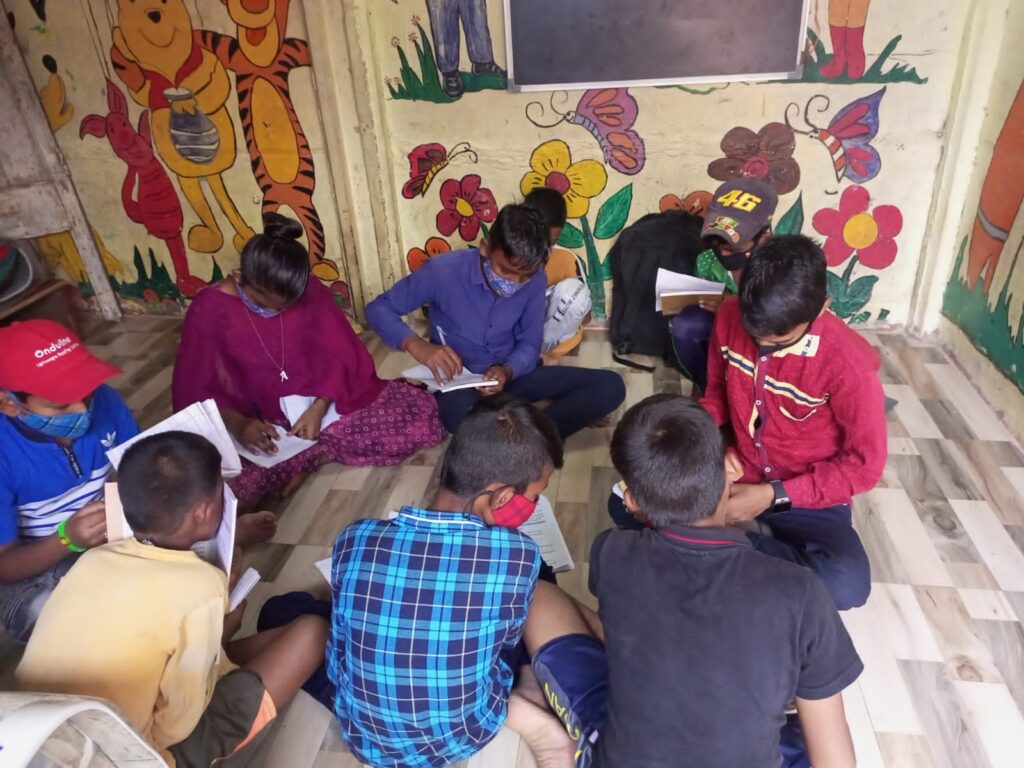
Community-based learning can start from the age of one and can carry on until the students complete their Grade 12 examinations. Some students continue attending the centre until they complete their undergraduate degrees.
Learning takes place at community centres, which are run by trained teachers and health experts who help students of all ages with their academic, mental, and physical challenges. If at times, teachers are unable to help students with certain subjects or topics, they connect them with professors who provide either offline or online support.
Under CBL, various concepts focusing on the needs of the community—along with the surrounding area’s institutions, history, literature, and natural environments—are incorporated into the curriculum. Community educators then use diverse instructional methods to help children understand the marriage between academic theory and its real-world application. Teachers build skills like critical thinking and problem solving by using examples rooted in the community’s shared reality—such as developing science-based tools to understand the problem of pothole detection when crowded areas flood.
A point to note here is that the centres don’t just complement school education—they’re not just after school clubs. They are themselves learning platforms for children to learn from. The students at CBL centres enrolled with AIC and SCT are mostly enrolled at the National Institute of Open Studies (NIOS) or at Indira Gandhi National Open University (IGNOU) through which they appear for their Grade 10 or 12 board exams. The centres run by AIC also support children with securing internships within the community to help them develop their hard and soft skills.
The 7 Steps of Developing Successful Community-Based-Learning Models
How can all of these benefits be leveraged for and by localised communities? There are seven steps that have to be thought through, to ensure holistic, in-depth, and meaningful education for these children and their families.
Step 1: Setting Up Community Centres
The first step when designing a community-based learning model is simple: establishing community learning centres.
Organizations like Sparsha Charitable Trust did so by opening small informal community centres in front of common spaces: these included near temples and mosques, besides someone’s house, or even on the footpath. “The idea is to give the children a safe space to just be themselves. It reassures the parents that being a part of an informal [public] space doesn’t necessarily cause harm [to their children],” explains Sarika.
This is the cornerstone of a good community centre: it doesn’t necessarily need to be a formal space, it just needs to be a trustworthy one. Establishing trust with parents and guardians is key, as some are often apprehensive that the centre could teach children to ‘act out of’ their caste, religion, or ethnicity. It is important to carefully negotiate both these beliefs and the objectives of community-based education.
“It is important that we establish the ‘what’ and the ‘why’ [of the community centres] with the community’s leaders beforehand,” argues Tarun Joshi, Executive Director of Ashraya Initiative for Children. “For generations, the denotified communities we work within Pune have been told by their elders [and before that by oppressor castes] that education won’t lead to any kind of upliftment. However, just having a space where individuals can address their concerns and ask questions about education, health, financial assistance, and much more helps the students and the parents to make info,” says Tarun
Remote communities can also benefit from community-based learning models as neither children nor parents need to commute long distances to receive skills, knowledge, and resources. They can engage with them in the vicinity of their homes.
Step 2: Prioritising Health
Several times, health plays a crucial role in determining the educational outcomes and overall upliftment of communities in India.
To address this, AIC’s community learning centres catering to several denotified tribes in Pune, provide both parents and students with free health check-ups, maternal and child care, and family planning sessions. Doing so increased the communities faith in the centres, while also giving them access to added avenues of nutrition and health.
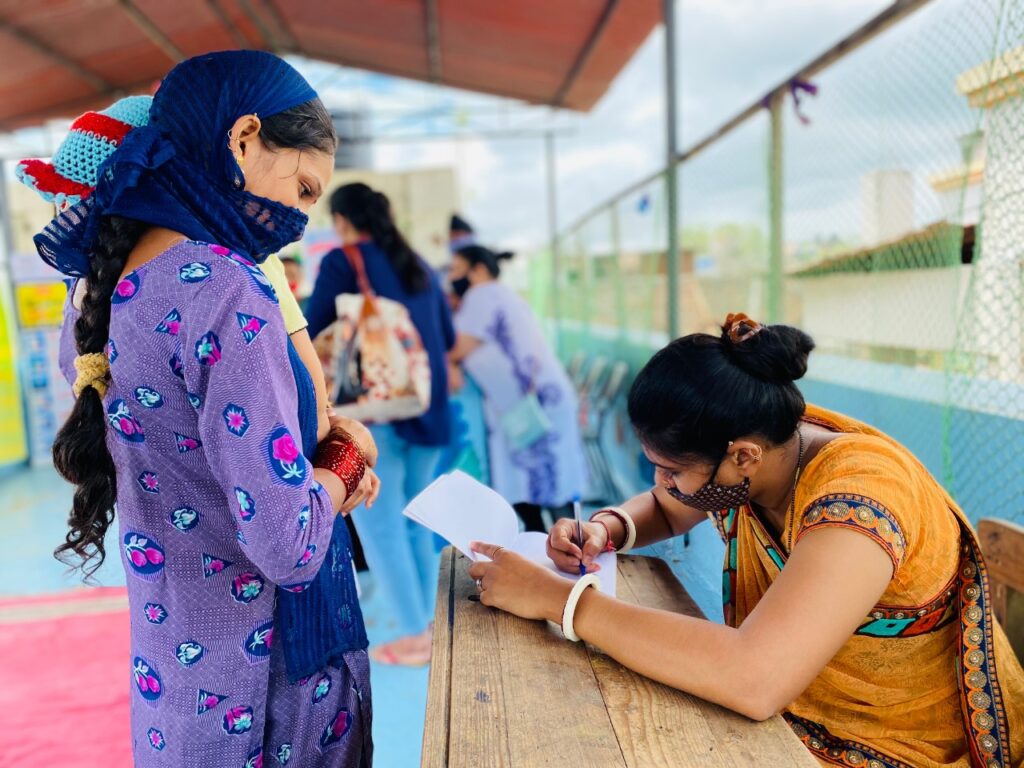
“As health practitioners are accompanied by community members, the willingness of local communities to visit the health centre is much higher,” explains Joshi. “Once they visit, they are then directed towards the required doctors. We are tied up with nearby doctors and dentists, who are aware of the community’s needs and provide them with the required resources.”
Step 3: Involving Parents in the Child’s Education
Involving the parent in their child’s education is what makes or breaks the community-based learning models. Having the parents involved in every aspect of the child’s growth and development makes it easier for the interventions to be successful. Parents from the BMC and Waghari community both initially showed reluctance towards sending their children to a community-based learning model. However, with time and seeing the efforts and results of both the organizations, parents started trusting the community volunteers. Sarika shares “At times, we had parents come to the centre just to check what was happening, they would check if the children were studying or involved in various activities. Although once they started trusting us there was no going back, they told members from the community and outside the community to send their children here. It also encouraged various parents to be involved in all their children’s education equally and become financially stable.” Involving the parents even though a difficult and time-consuming task, made it easier for AIC and Sparsha to have several other interventions. The centres called mothers and women from the community to talk about menstrual hygiene practices and help girls from the community while various other parents volunteered to help the community members with logistical support.
Step 4: Addressing the Child’s Vulnerabilities
The denotified tribes AIC works within Pune often face the challenges of child labour, child abuse, and child marriage. To curb these practices without offending the community is often a difficult task.
However, building awareness is the key to addressing these issues. “The community centres are used to discuss these topics and move more and more children out of these practices and into a formal learning environment,” says Joshi. “For example, girls are not given the opportunity to pick their own career. Our community centre in Yerwada has given girls and their parents a platform to discuss these issues and find contextual solutions.” Several girls from the community have gone from dropping out of school to joining the community centre and continuing their education. Meena (Name changed for confidentiality) from the Waghari community shares “School was hard, I didn’t understand much and didn’t know who to get help from, I thought getting married was the only way forward, so I stopped going, however, with the community centre, it was really easy, everybody was welcoming, it was right around the corner, understood my challenges and helped me overcome it. The AIC centre definitely helped me with my overall wellbeing.”
Step 5: Enabling Access to the State for Families
Once the children and the parents develop trust for such centres, a major step is to use them to help link families to government welfare schemes.
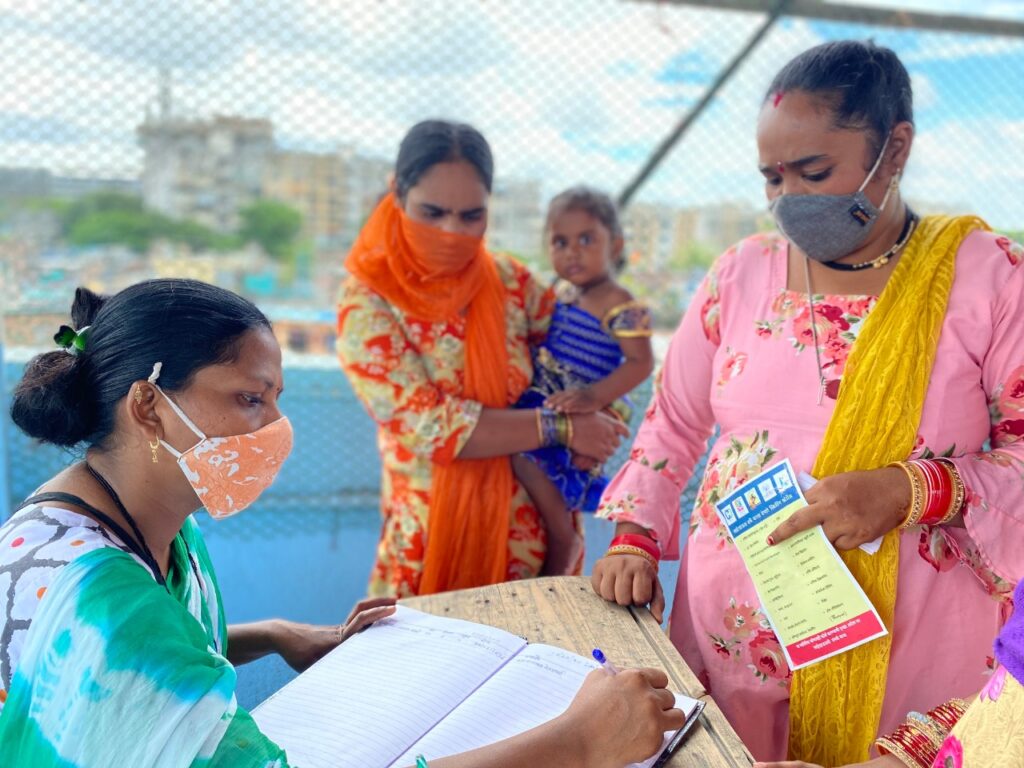
“We inform the communities we work within Mumbai about the various documents [ration cards, Aadhaar, PAN, birth certificate, voter ID] they require, and how those documents can be used to receive resources, funds or any other services,” says Sparsha of SCT. “We help them apply for these documents by putting them in touch with the concerned offices. Many parents have told us how having an identity card has made them feel empowered: that they have the right to ask for what they deserve [from the State].”
AIC was able to help 125 families in Yerwada, Pune with this process, while SCT was able to help 17 different communities living across four parts of Mumbai.
Step 6: Enabling Financial Independence
Community-based education aims at supporting children from their early years until they take on employment as adults. It doesn’t stop at just providing education—the aim is to link youth jobs and vocational training courses too. This is one critical step towards enabling financial independence.
Another aspect of financial independence is managing incomes too. Households with just one earning member from the BMC communities report earning ₹100 to ₹500 per day—a small amount to support a family of 5 to 7 members in the megacity.
Sparsha and AIC’s community centres help parents manage their homes within this budget, giving the family an opportunity to reorganise its resources and plan the month’s spending in advance. This helps them save for higher education, marriage, and other large expenditures. To enable this, the centres act as spaces to discuss how to open bank accounts and avail of relevant government schemes.
Step 6: Maintaining A Flexible Pedagogical Approach
Community centres offer an alternative to a school-based learning model. This gives them the option to pick the community centres as a remedial space (while continuing their education in formal schools), or to use the community centres for their entire formal education by enrolling for the National Institute of Open Schooling. In the open schooling system offered by these community centres, children are not constrained by a fixed combination of subjects or by specific textbooks that need to be covered before a set examination deadline. They are free to take examinations as per flexible schedules and are given multiple chances to succeed, rather than a binary pass-fail system.
Step 7: Nurturing Community Experts
At community centres, people receive professional guidance and upskilling sessions from experts. At the same time, it is also important to encourage trained individuals from the community to contribute with the experts and co-execute these practices on their own.
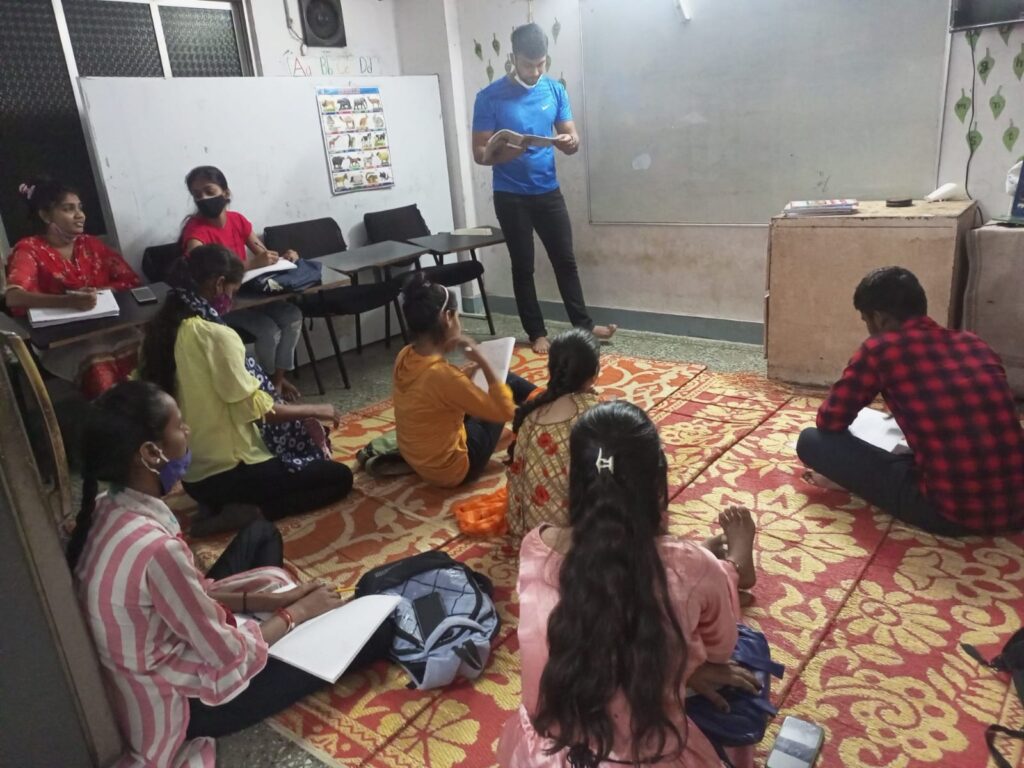
Tarun and Sarika both point out how if community members play an active role in supporting the activities of the community centres, this has a longer and deeper impact. Such partnerships help sustain community learning: if an expert or trained professional is unable to take a session at the community centre, the NGOs invite community members to step in. This reduces the gaps in the education or other services provided. During the pandemic, some trained assistant teachers in both the Pune- and Mumbai-based communities we’ve mentioned initiated learning circles for students at AIC’s and SCT’s community centres, while also helping parents with managing their finances.
Looking Ahead
Every community comes with its own set of beliefs, practices, challenges and strengths. To manoeuvre through these and establish the value of community-based learning models takes time. However, having a multi-dimensional approach does yield results. For example, along with the communities, both AIC and SCT actively leveraged their local support during the pandemic.
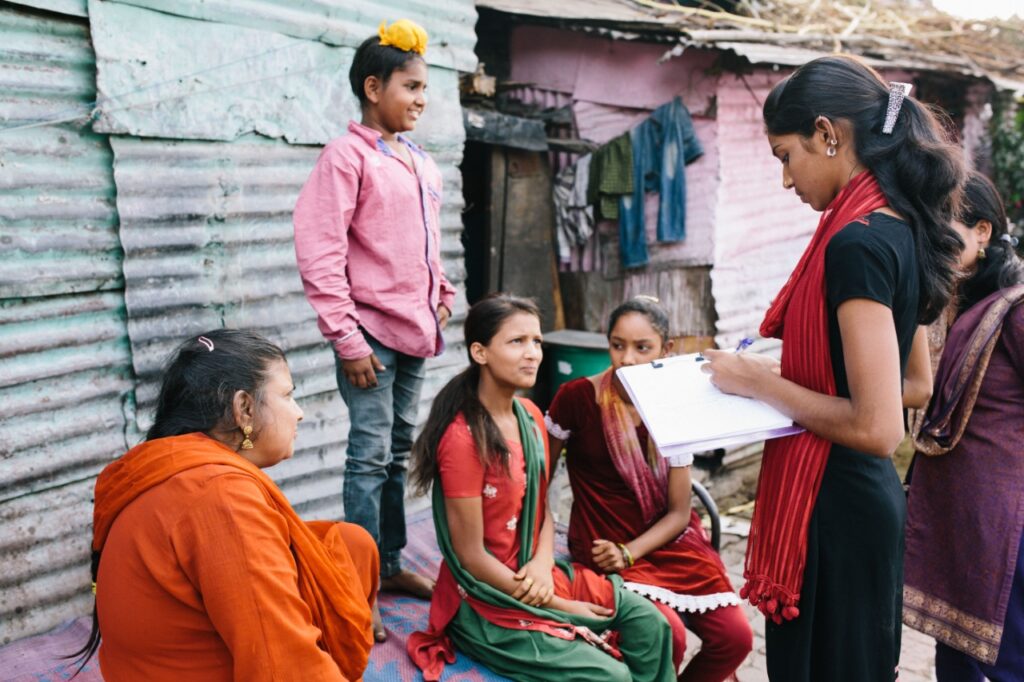
AIC was able to vaccinate 125 families (or over 600 individuals) while making sure that another 125 families received dry ration (apart from the ones being distributed by the government) for more than a year. SCT distributed sanitisers and masks to 10,000 families and provided dry ration to 1,200 individuals who migrated to Mumbai during the pandemic. As the pandemic pushed more families into a financial crunch, AIC and Sparsha both arranged financial literacy sessions to plan for the future too.
Community-based NGOs create a way for the families to collaborate and find contextual ways to support the education of their children and empower individuals. As the cases from Mumbai and Pune show, while they might focus on education, they weave in a need to address several other aspects of a child’s life which play a critical role in not only keeping them in school but in contributing to quality education.
Featured image: community members guided by an AIC volunteer on National Girl Child Day; courtesy of AIC.




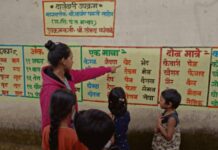


[…] margins, obtain due consideration and encouragement in pursuing their research. As per reports, these fashions have been capable of bridge the final mile in relation to schooling, particularly […]
The article has extremely high-quality content, I appreciate it, your article will certainly bring a lot of useful knowledge to everyone. respect you